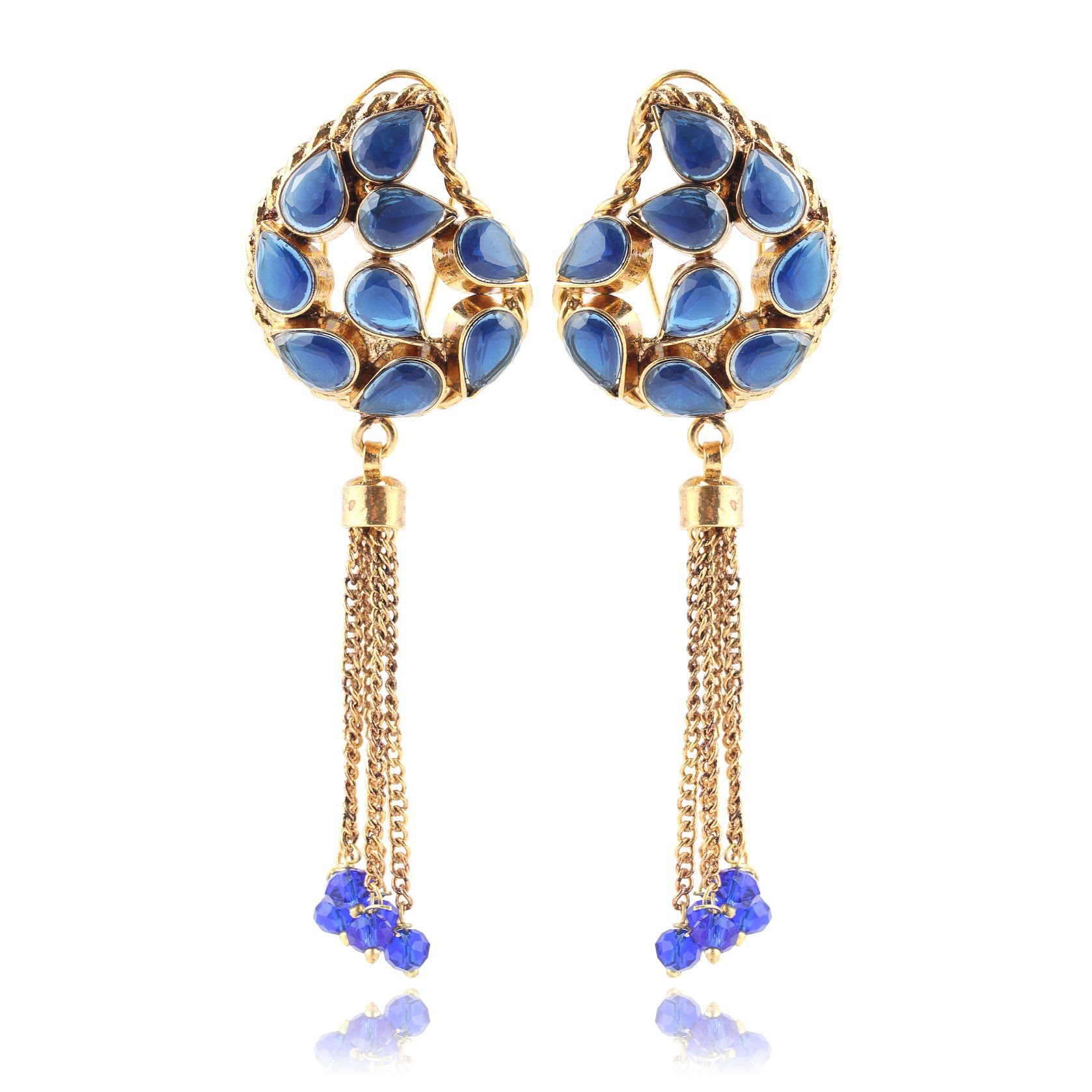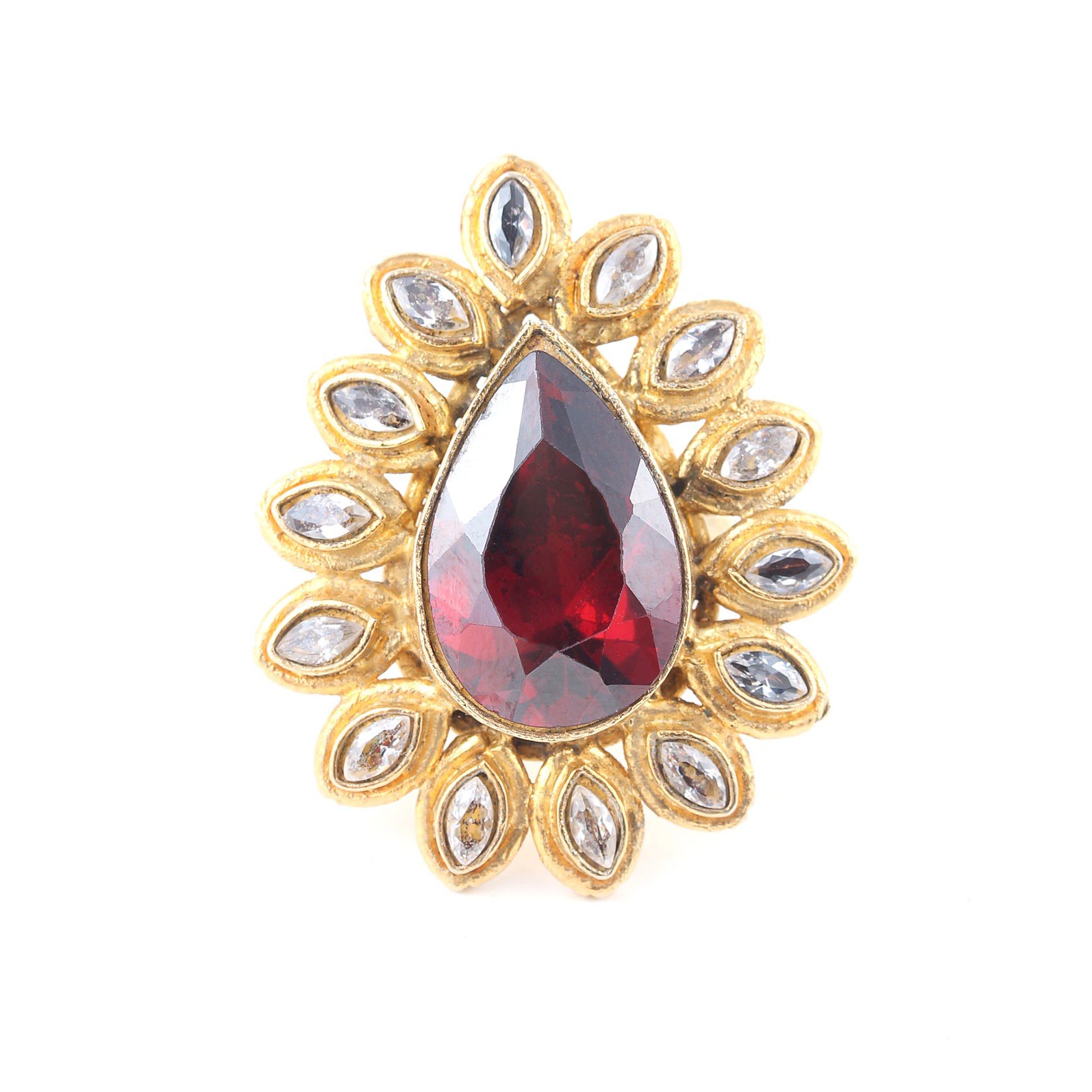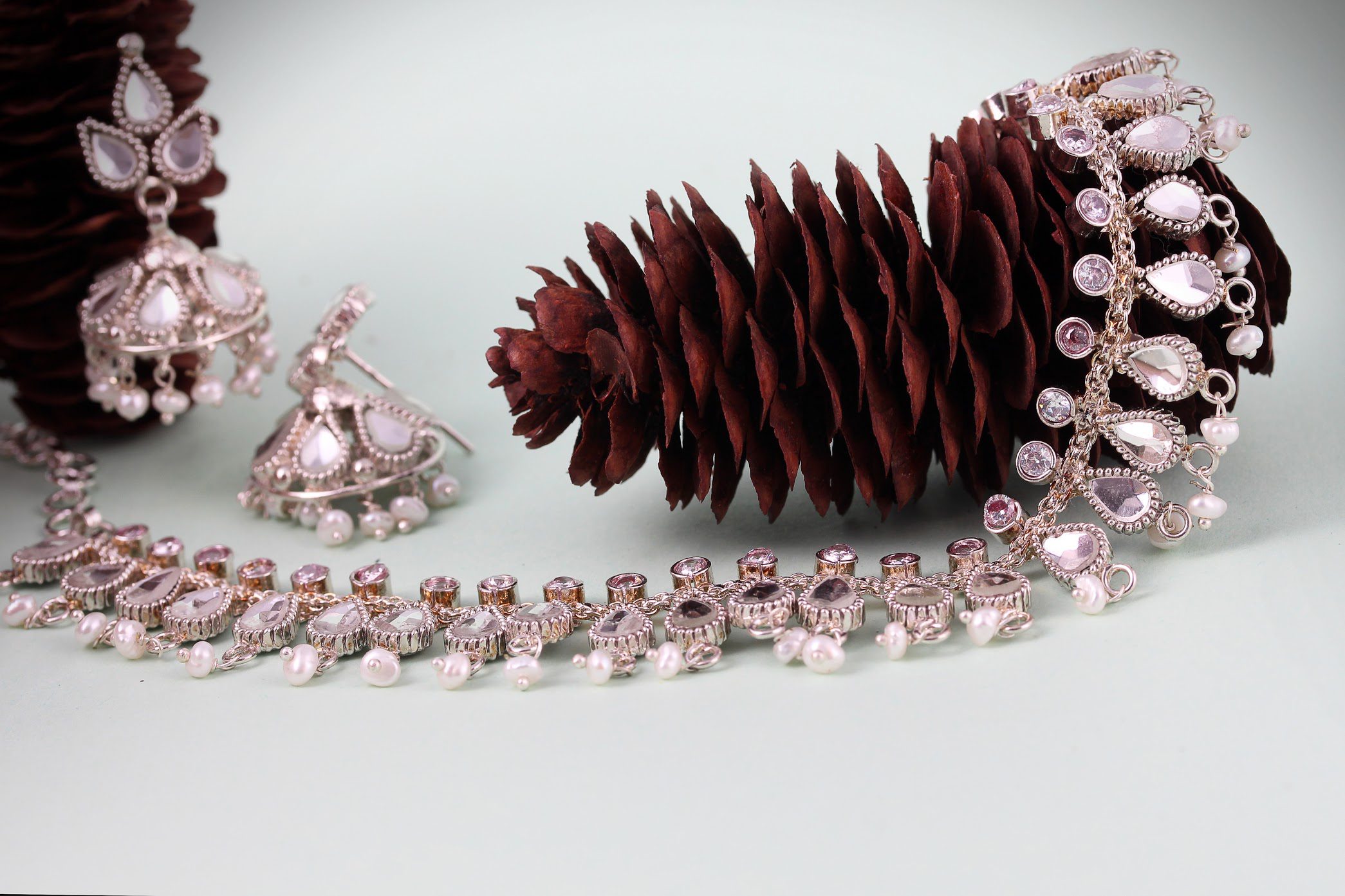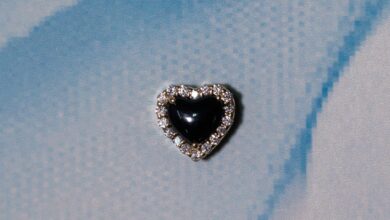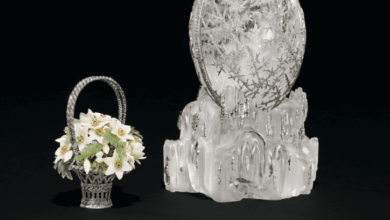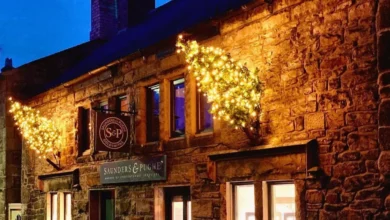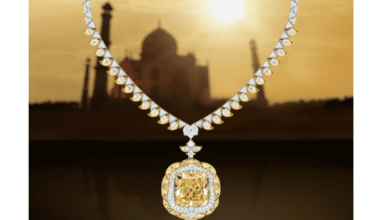Kundan Jewellery – Reviving a dying Mughal art
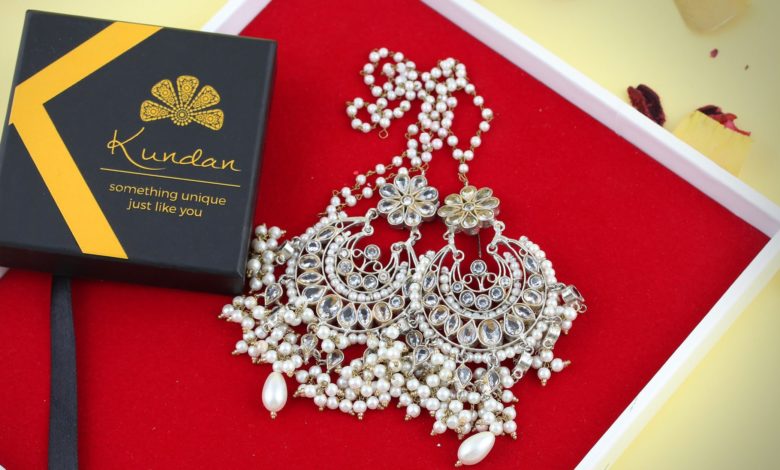
Register to get 1 free article
Reveal the article below by registering for our email newsletter.
Want unlimited access? View Plans
Already have an account? Sign in
“Kundan jewellery just isn’t good business anymore, so people are finding other lines of work”, said Ali Azeem, a Kundan craftsman in Lahore. “You work hard all day, only to earn a 1000 rupees (£7) at day’s end. If only our own people value it as much as the foreigners do.”
Those are the words that inspired a global Kickstarter campaign called Kundan, a socially-conscious initiative by five MBA students from Lahore, Pakistan. Their mission is to revive the dying art of handmade Kundan jewellery, by consolidating the manufacturing process and introducing design innovation which the current local industry is missing.
What is Kundan jewellery?
“The origin of Kundan jewellery dates back to the Mughal Empire where Lahore was actually one of the main strongholds of the Mughal Dynasty. This jewellery was made for the Mughal emperors and princes and was inspired by the difference jewels at the time,” says Fawad Bhatti, the man behind the Kundan Kickstarter. “It was made in actual gold at the time but now it is made in brass. They originally contained rubies and encrusted diamonds and were heavily inspired by the architecture of the palaces inhabited during the Mughal empire.”
He explains at that time the knowledge of the art was transferred from generation to generation and emperors often passed the jewellery down to their son and queens to their daughters. At the end of the Mughal Dynasty Kundan jewellery started to die out, and at that time, because the people of the region were not rich, they began moving away from precious to semi-precious jewels.
As an affordable alternative to gold jewellery, Kundan designs remained popular in Pakistan for many years as casual jewelry. However, sales in the recent past have been restricted to wedding seasons only, and local producers face strong competition from India and China.
The craftsman’s process
After a design has been finalised including the gem, whether it is precious or semi-precious, its size, shape and and colour density, the gems are then scraped by the skilled craftsmen according to each design, against a specialised rotating mortar to ensure proper dimensions and angles of the stones. Buffing and polishing of the stone follows scraping, after which the gems are ready to be put onto their Kundan base.
Next the craftsmen collect the materials required to create the custom piece of jewellery, according to the requirements of the design of the customer. Common materials include metal for the base, gold, or silver for foiling the gemstone and different dyes for the enameling.
After the relevant material has been collected, the jewellery making process is officially started with creation of the thappa. The thappa is the mold which gives the structure to the entire jewellery piece. The thappa is made with the help of a metal, usually a brass and iron alloy which is wired and then cut into various shapes and sizes according to the design sample provided.
The pieces are then aligned and placed to match the jewellery design, laid out on the workbench of the crafter, and glued and soldered together to form a jewellery skeleton where further crafting to take place. These pieces are then placed on a similar metal plate and are heated to join them together with any rough edges smoothed with a file.
The craftsmen then adds a synthetic glue. The glue is then mixed with epoxy and coloured in order to match the base. The glue sticks are adjusted based on experience to meet the size requirements of different designs. The base and glue are heated and melted with each other allowing the gem and base to be fixed.
Afterwards gems are inserted into these small potholes in the base. Then a two step process involving 18ct gold or silver is electroplated onto the brass alloy base and secondly a polish is used which is rhodium based in order to keep the shine lasting longer.
The Kickstarter
The process takes a lot of time and skill – something Bhatti appreciates and hence the idea for the Kickstarter came when Bhatti was visiting Azeer in his workshop in Lahore. “He told me about his story about how his forefathers made Kundan jewellery centuries ago from the time of the Mughal Era and how the skills were passed down from father to son and so on. He explained to me why Kundan craftsmen are struggling and how that that the designs are now perceived to be too big and bold for the people living in Pakistan. People’s tastes in Pakistan have seemingly moved towards more minimalist designs.”
As a result, Kundan craftsmen have a hard time finding work. “There’s no future in this work [Kundan craftsmanship],” he says. “Once upon a time, every craftsman taught this skill to his son, like my father taught me, but now people want their children to join a more stable profession” says Azeer. “If this keeps up, I am certain that you’ll only be seeing machine-made Kundan in the market.”
Bhatti continues his story by explaining that Azeer told him that he believed if he was able to expose this type of traditional jewellery to the rest of the world there may be people out there who would be drawn to the old traditional and extravagant designs. “Having done a Kickstarter before I thought why shouldn’t I run one not only for him but for the other nine craftsmen in the area.
“He makes the designs at home or at his small studio and then tries to sell it in the main city. This is becoming more and more difficult and is almost making it impossible for him to actually sell at a margin of profit due to the small machine made jewellery now available. He also tries to sell to the main jewellery stores, and make custom orders to individual people.”
The Kickstarter asks for donations of anything upwards of $1 with certain rewards offered for donating larger amounts, such as complimentary rings to even a fully funded trip to Lahore for those who donate $6,000. The money raised, will help set up the craftsmen with distribution links to the US and the UK.
The eventual goal
“The eventual goal is that we help the craftsmen reach people in the US and UK, as they are the primary two countries we are trying to target. These two countries have a good Pakistani and Indian population but we are also not trying to limit ourselves to these consumers,” says Bhatti. “We are trying to set up a supply chain as the craftsmen are brilliant at making the jewellery but not marketing and selling their products and that is where we come in.
“It is about securing the craftsmen future and the future of handmade traditional Kundan jewellery. I guess the ultimate goal is to establish Kundan as a fashion product instead of an antique collection.”
Bhatti explains that the current audience for Kundan jewellery in Pakistan is mainly middle-aged men and women who like the concept behind traditional jewellery and want to see it come back in style.
“It is a split between people who like the social campaign behind our idea and people who are solely interested in the jewellery. Our next plan is to try and look for people abroad who could support this campaign. One thing are trying to do is to find a differing range of people on social media to see if they like our jewellery and to help get our message across.”
Is there interest abroad?
“Trends come in and out but our hope is that Kundan jewellery will come to the forefront and allow our Kundan craftsmen to have a sustainable living, it may not become the most successful type of jewellery but I do think there will be a lot of people who want this type of custom and unique handmade jewellery – which is not always on offer.”
With the current status, Bhatti has hopes that Kundan will be popular among young women who want to express their culture or who want to stand out from wearing regular jewellery. One person that can attest to the popularity of Kundan jewellery outside of Pakistan is Sunny Divan, the owner of Asian jewellery store Nargis Collections based in Westminster, London. “In the last three years we have seen a massive increase in the demand for Kundan jewellery,” he says, “partly because it is jewellery that is very popular to be warn for weddings and that has seen it grow as more and more brides wear the jewellery and influence their friends and family.”
“It is also very popular for events and parties. The good thing about Kundan jewellery is that it looks very regal so it is always in fashion. If you buy Kundan jewellery now it will still be relevant 10 years from now, it also helps that it is handmade with precious or semi-precious jewellery as it keeps the demand high – they are timeless pieces.”
Divan also explains that as Azeer expected demand for Kundan jewellery is not just limited to those from Asian backgrounds. “We have a mixed customer base with around 80% of our customers from Asian backgrounds the rest are white or African. In the last few years we have seen an increase in non-Asian customers. We recently had a British bride who wanted all of her wedding jewellery to be Kundan and we supplied her with all she needed.”
He continues: “I think quite a lot of people are coming into the trend as they are starting to wear Asian jewellery. We have also started to created indo-western fusion jewellery to create even more demand for it. We have recently sold Kundan jewellery with American diamonds which are very popular.” At the time of writing the Kundan Social Kickstarter campaign is sitting just £1,500 from reaching its goal
“Art doesn’t really die,” says Bhatti, “every single person is fond of one form of art or another. What matters is how you present your art and where you present it, and there really isn’t a platform other than Kickstarter, that can reach a genuinely interested global audience.”


